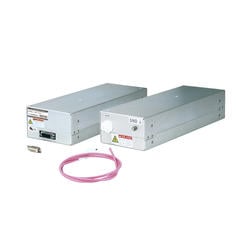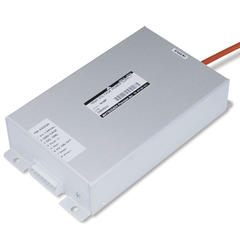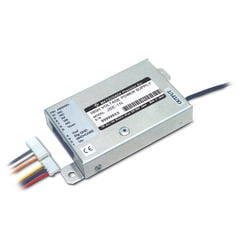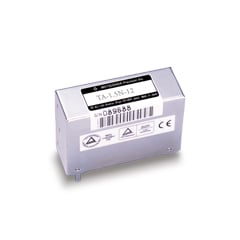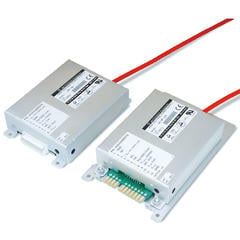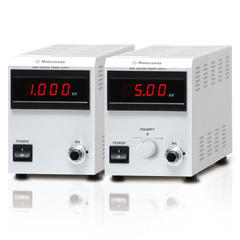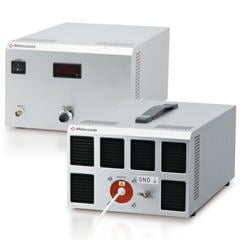What is Mass spectrometry?
Mass Spectrometry (MS) is a technique for analyzing the composition and quantity of atoms and molecules constituting an object to be measured by measuring its molecular weight. To perform mass spectrometry, the object to be measured must be ionized, and the ions must be separated and detected. There are several types of ionization and mass separation methods. They are used according to the state of the object to be measured (solid, liquid, gas, etc.), the component to be measured (organic, inorganic, etc.), and the purpose of the measurement.
It is widely used for pharmaceuticals, environmental analysis, proteomics, and other applications because of its extremely high sensitivity and wide range of measurements.
Mass Spectrometry Instruments
A mass Spectrometry instrument consists of three major components. The ionization section ionizes the sample, the analyzer section separates the sample by mass, and the detection section detects the ions.
Mass spectrometry includes gas chromatography-mass spectrometry (GC-MS), which uses gas chromatography (GC) for sample introduction. Other types include liquid chromatography-mass spectrometry (LC-MS), which uses liquid chromatography (LC), and coupled induction plasma mass spectrometry (ICP-MS), which uses coupled induction plasma.
Ionization section
The ionization section, also referred to as the ion source, includes the following ionization methods.
- Electron ionization (EI)
- Chemical ionization (CI)
- Atmospheric pressure ionization (API)
- Electrospray ionization (ESI)
- Atmospheric pressure chemical ionization (APCI)
- Matrix-assisted laser desorption ionization (MALDI)
- Secondary Ion Mass Spectrometry (SIMS)
The use of each ionization method is limited by whether the compound is to be measured as an organic or inorganic compound and the form of the object to be measured: solid, liquid, or gas.
Mass analyzer section
The mass separation section, called a mass analyzer, classifies and separates ions according to their mass-to-charge ratio (m/z). Specific ions are separated according to the lens voltage. The following methods are used in the mass analyzer section
- Quadrupole mass analyzer (quadrupole mass spectrometer, QMS)
- Double-focusing mass spectrometer (sector mass spectrometer)
- Time-of-Flight Mass Spectrometer (TOF or TOF-MS, TOFMAS)
- Quadrupole ion trap (QIT)
- Ion trap mass spectrometer
- Fourier Transform Ion Cyclotron Resonance Mass Spectrometer (FT-ICR-MS)
Ion Detection Section
The ion detection section detects specific ions separated in the mass separation section. By sweeping the lens voltage of the analyzer section, the mass spectrum of the m/z ratio and relative abundance can be obtained.
The following detectors are used in the mass spectrometer
- Microchannel plate (MCP)
- Electron multiplier tube (EM tube)
- Secondary electron multiplier (Channel Electron Multiplier CMT)
The combination of the ionization section, analyzer section, and sample introduction section is called Q-TOF, MALDI-TOF, LC-TOF, GC-TOF, and other instruments. There are also instruments such as MS/MS in which two mass spectrometers are connected in series with a collision cell.
Precision power supplies for mass spectrometers
Mass spectrometers include many types of ionization and mass separation sections and various equipment. The power supplies used in these instruments also vary in performance. In addition, the power supply used for the mass spectrometer must be highly stable and have low noise so as not to affect the accuracy of the analysis. In particular, the high-voltage power supply used in the mass separation section requires very high performance.
High voltage power supply products for mass spectrometry
We offer a wide variety of power supplies to meet the power requirements of various types of mass spectrometers. We produce high-voltage power supplies for parts of mass spectrometers called pushers, reflectors, tube bias, extractors, detectors, analyzers, lenses, ion traps, and accelerators. Matsusada Precision supplies high-performance power supplies that can meet your requirements.
The following products are just a few examples
We can also accommodate custom high-voltage power supply products, so please contact us for more information.
Example of high voltage power supply configuration
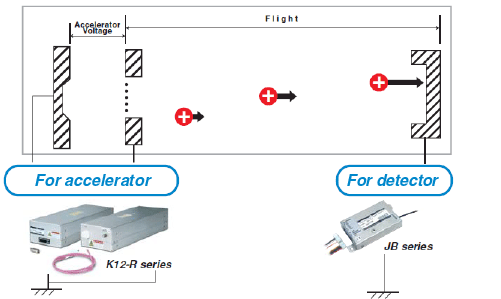
| Application | Series | Feature |
|---|---|---|
| For ion accelerator | K12-R series |
|
| KAS-R series |
|
|
| KA series |
|
|
| For detectors such as EM or MCP | JB series |
|
| TA series |
|
- Related words:
-
- ionization
- thermionic electron
- tunneling effect
- magnetic field
- detector
- accelerator mass spectrometer
- time of flight mass spectrometry (TOF)
- quadrupole mass spectrometers




